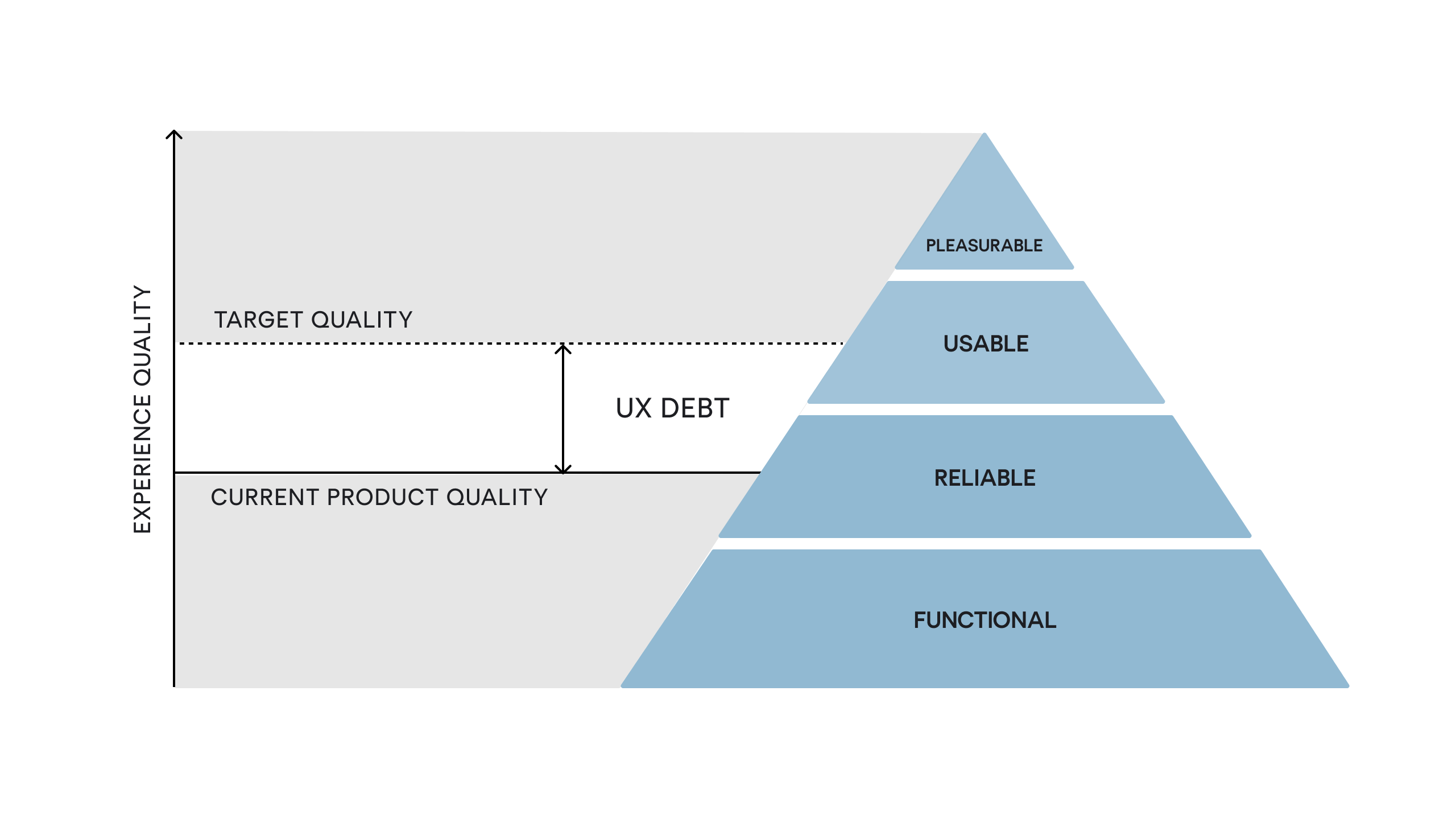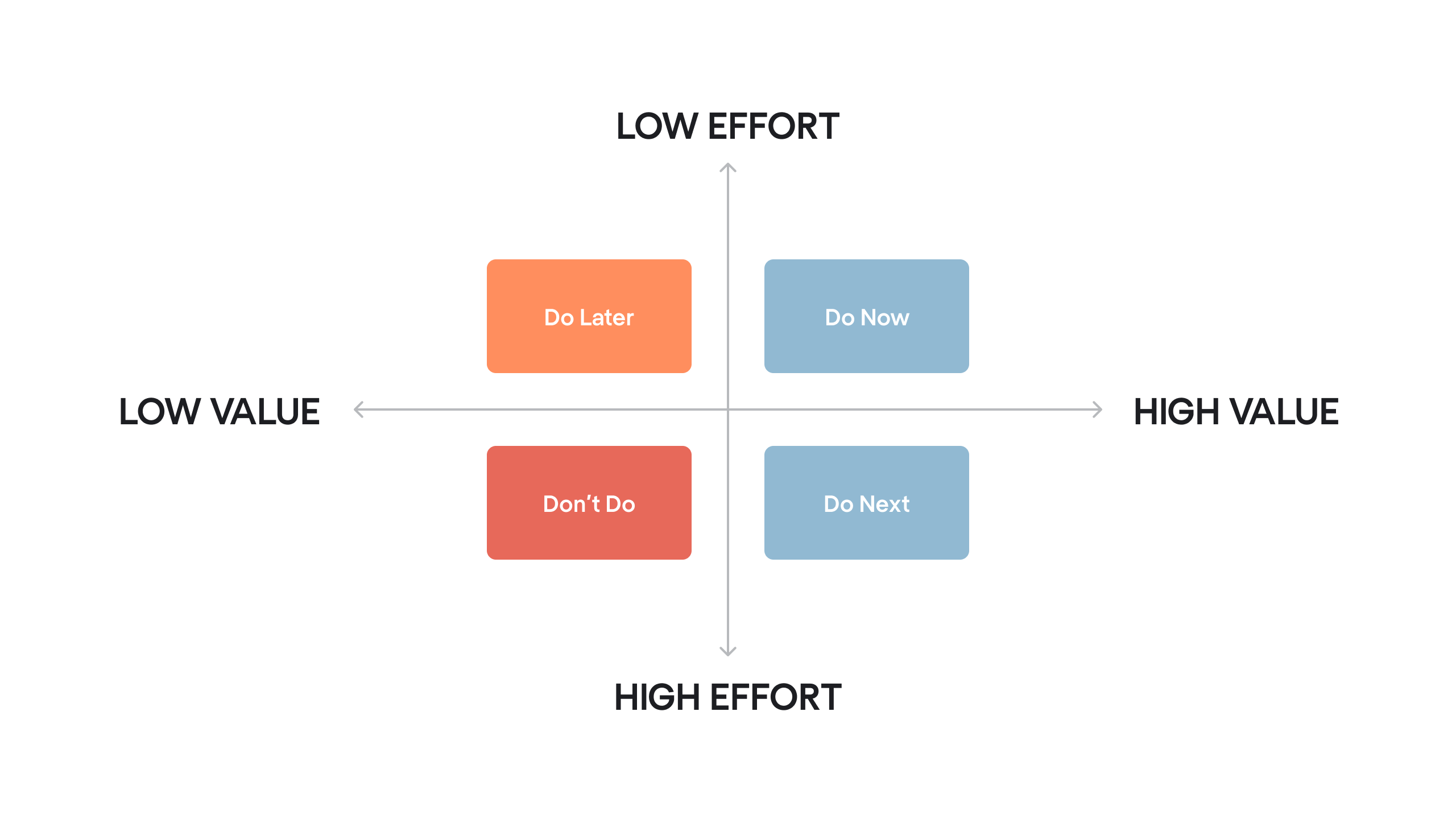
Debt, whether it be financial or technical, is always difficult to handle when left unaddressed, and can cause real trouble later on. A UX debt is no different. You see designers hustling every day to make the user experience better, but UX debts can be a serious obstacle on their way to success.
UX design agencies, Agile teams, and product owners are particularly prone to UX debt as a result of limited resources, strict deadlines, and emerging market trends. As a design agency working mostly with SaaS businesses, we understand that an increasing debt can result in loss of trust among the customers or end-users, resulting in an overall decline in traffic and revenue.
If you’re one of those UX designers, product owners, or Agile teams who are finding their way out, this guide will help you manage and get rid of your design debt.
More than that, over the years our team has built a major UX expertise and is ready to help you conduct a UX audit. But you can learn more in this regard on our other page, we're dealing with UX debts here.
First of all, let us define what is a UX debt.
What is meant by the term UX debt?
UX debt, or User Experience debt, is similar to technical debt. In tech debt, when a company chooses a deadline over quality, they usually have to face backlash. Then, they have to come back and reiterate or redesign the solution at the cost of extra time and resources, which means the company is "in debt". That’s exactly the case with UX debt.
You see examples of UX debt every other day. Let's say that you go to a website to find a product or service. However, even though you found what you were looking for, you notice that the website isn't as seamless or attractive as you expected.

In the picture above we can see a typical example of UX debt. Although you find the site functional, you’re disappointed by the overall experience and would love to have something better. Congratulations and condolences - you've experienced a classical UX debt.

Users these days are not satisfied with just the solution addressing heir needs; they want more. This includes everything, from experience and aesthetics, to smoother transitions. So, when a website is created, it's considered debt-free as long as the user doesn't criticize the design. But when they do, the debt arises.
What are the factors leading to increased UX debt?
Before we head on to the factors, let’s discuss the two basic types of UX debt. These are: the intentional or predicted UX debt and the unintentional UX debt that the user indicates. The intentional debts are “intentionally” put on hold as they are considered less important, while unintentional debts are the ones that end-users discover themselves.
The following factors cause these types of debts:
Lack of information
Prior to designing the product, the design team is obligated to do user research to know their ideal user’s requirements. The UX design teams have it in their best interest to find all the necessary information, which they can use to design a product or service that will satisfy the end-user.
This is cruial, since market trends change very often and might even change while you’re working on the design. That's why the lack of information can create a gap that would be hard to fill, and the result could be an unsatisfied user.
Varying inputs
You may have heard the phrase "too many cooks spoil the broth". This can cause UX debt as well. There can be issues and conflicts in cases of large-scale projects that involve multiple UX teams.
Such conflicts take place when various inputs are coming from different teams. Incorporating all those inputs can be difficult and costly. This not only causes confusion but can also complicate the product and add to UX debt.
In these cases, the project manager or the person in charge should look at all designs with a critical eye and evaluate which input is valuable and which is invaluable. Creative freedom is important, but not at the cost of resources and design.
Market needs
At times, the increased market need creates an urgency to deploy the product faster, and the shortage of time causes designers to meet the given deadlines with no focus on quality. This mostly happens when there's a goal to launch the product before your competitors.
Market needs cause an intentional UX debt when the designing team launches the product with its existing flaws on purpose. In these cases, the designer is aware of the fact that there's room for improvement.
After the product is launched, the designer has to come back and make additional changes to increase the design functionality. But the outcome is an added debt into the backlog.
Budget limitations
This is another factor that causes an intentional UX debt. When a UX design firm works on a project, it sometimes faces budget constraints. When that happens, the product team has to prioritize the aspects of design that are more important and fall under the “must-do” category.
However, oftentimes even less significant aspects add to the user experience, which the team often neglects. This causes a UX debt that is fixed when the budget or other constraints are removed.
Negative impact of UX debt
Now that we know what a UX debt is and how it happens, let’s get on to why UX debt is such a big deal. There are multiple reasons why UX debt is a huge problem in product development:
- It isn't easy to re-open closed projects. Revisiting and reiteration in a project don’t only cost money, but also impact the current ongoing projects. As finding the issues and correcting them entails more research and development, dealing with a UX debt is a time-consuming job.
- Another reason is a loss of users' trust. When users explore the product for the first time and leave unsatisfied, they won't be eager to try it again.
- Once people get used to the original design, even if it is flawed, they will always resist the change. By correcting the old mistakes, your existing users might abandon your product. But if not, you may never get new ones.
How to manage & resolve UX debt?
Managing and resolving UX debts requires the following steps:
Step 1: Acknowledge the debts

Identifying and acknowledging the debts is the first step to success. In this step, you create a debt inventory or backlog to find out all the possible incurred debts. This can be done by regular audits, usability testing, and heuristic analysis.
In cases of user testing, you either use the product yourself or make the team test it and analyze the product on factors like design persuasiveness, seamless navigation and functions, aesthetics, credibility, clarity of content, and accessibility.
Step 2: Track the debts through audits
At times, there are debts that you don't know about, or that are impossible to find at all, due to inefficient tools. Because of this, there's a crucial need to run a proper UX audit to find out all the significant or insignificant debts. But keep in mind that with the right tools for audit it’s much easier to conduct it.
To track and manage UX debts, it's also important to list all the design cuts intentionally left due to time or budget constraints. These design cuts will be added to the debt backlog along with all the other debts tracked by the audit.
Finally, list all these debts in a spreadsheet for conscious prioritization.
Step 3: Prioritize the UX debt
Now, how do you prioritize?
The design debt spreadsheet or backlog needs to have a section that shows the priority of the debt. Apart from priority, the sheet must contain the impact, criticality, and amount of effort required for the task.
The urgency can be decided by using a priority matrix. All the debts that cause a high value to the product are catered first, and the ones with low value are left for the next interval.

To prioritize UX debt the product team needs to slow down or pause the development of new features. Easier said than done but your product will benefit from such a decision in a long-term game.

Step 4: Plan & resolve the debts
Now, why do you need to plan UX debts?
This is because once you have a pile of debts ready to fix, you can’t pay all of them off at once. Because if you do, your whole team will get on fixing the debts, and your existing projects will suffer.
So, dedicate a specific amount of time each month or in fixed intervals in which your team will wipe away the debts. This will not affect your working capacity much, and the issues will be solved one by one. After this, create success metrics describing how your cleared debt will help in the user experience.
And there you have it — the debt is repaid.
To Sum Up
Managing your UX debts can be an intimidating task. However, with professional audits, clear prioritization, and strategic planning, you can get the job done in no time!
Don’t hesitate to contact our team if you want to avoid the misfortune of UX debt or conduct a UX audit.










